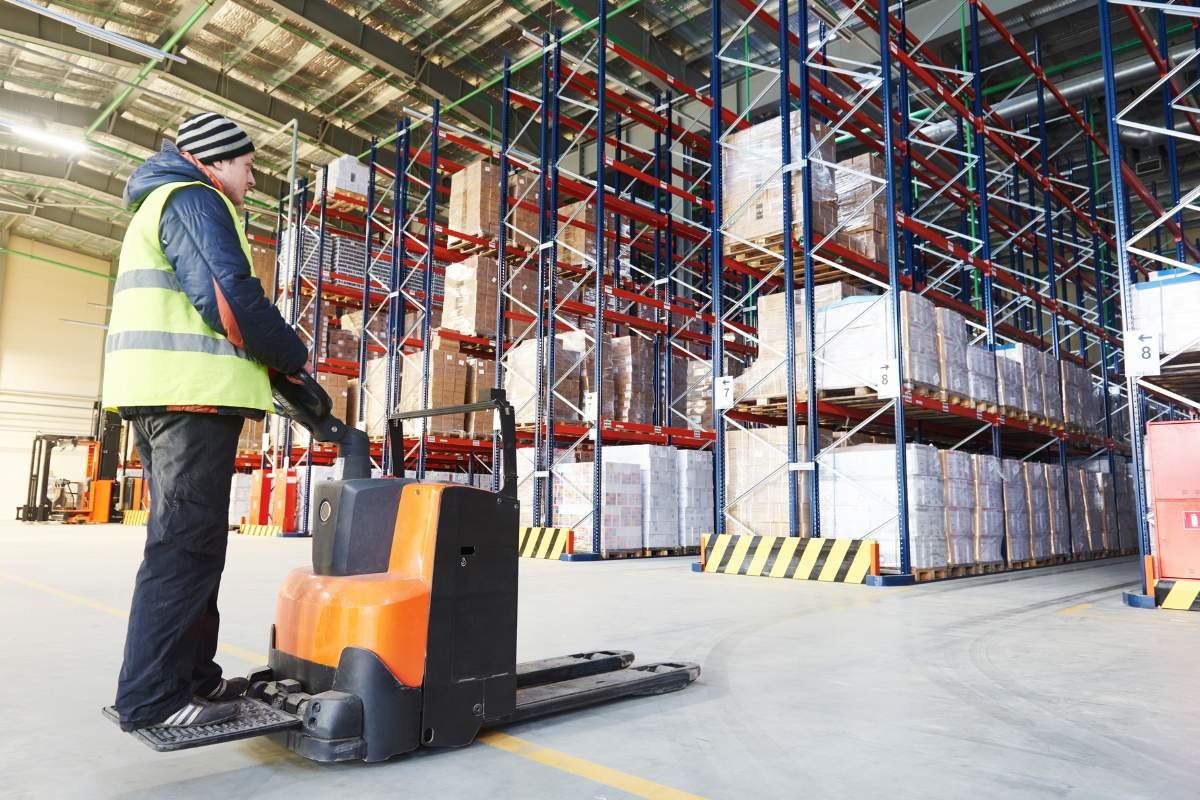It’s easy to confuse pallet trucks with forklifts when one is still starting out with material handling equipment. After all, both are designed to move heavy loads and are regularly used in warehouses, distribution centers, and various industrial settings. At first glance, these tools also appear to serve the same purpose, which is moving heavy loads from one point to another. However, a deeper understanding reveals that pallet trucks and forklifts have different capacities, functions, and ideal use cases.
Using a pallet truck when a forklift is required, or vice versa can result in inefficiencies or even safety hazards. A pallet truck may be insufficient for lifting heavy loads to taller heights, while a forklift used in a confined space can pose a risk of damage or accidents. Knowing the key differences between these two pieces of equipment can help operators make informed decisions, ensuring that tasks are completed safely and efficiently.
A Closer Look at the Similarities Between Pallet Trucks and Forklifts

Both pallet trucks and forklifts play crucial roles in material handling. They share plenty of similarities, which contribute to the confusion between them. Understanding these similarities helps in recognizing their shared purpose but highlights why they are often seen as interchangeable.
Firstly, both pallet trucks and forklifts are designed to move pallets and other heavy loads, making them essential tools for transporting goods within warehouses and industrial environments. Their forks are engineered to slide under standard-sized pallets, enabling the operator to lift and move items from one location to another.
Secondly, they are both common in similar work environments, such as storage facilities, manufacturing plants, and retail stockrooms. These environments rely on efficient material movement, and both vehicles provide this service in varying capacities.
Lastly, pallet trucks and forklifts share a fundamental design, which features lifting forks and a platform for placing goods. Although the mechanics of lifting differ, the basic operation of sliding the forks beneath a pallet remains consistent. This functional overlap explains why many people may assume they are interchangeable at first glance.
Highlighting the Differences Between Pallet Trucks and Forklifts

Although pallet trucks and forklifts share a common goal of moving goods, they differ significantly in terms of power, lifting height, load capacity, size, and cost. Each of these factors plays a role in determining when one is more appropriate than the other. Let’s take a closer look at these differences:
1. Power
The primary distinction between these two lies in their power source. Pallet trucks are either manually or electrically powered. In a manual pallet truck, the operator physically pumps the handle to lift the pallet a few inches off the ground; electric pallet trucks use battery power to achieve this task with less physical effort. In contrast, forklifts are fully motorized, running on either internal combustion engines or electric motors. This gives forklifts the power to handle heavier loads over longer distances and for extended periods.
2. Lifting Height
Another key difference is in how high each tool can lift a load. Pallet trucks are designed for ground-level movement, with a lift height of just a few inches off the floor, carrying pallets just high enough to transport them. Forklifts, on the other hand, are capable of raising loads to significant heights, making them ideal for stacking pallets on high shelves in warehouses or reaching items stored above ground level.
3. Load Capacity
The load capacity is another critical difference between pallet trucks and forklifts. Pallet trucks have a limited load capacity, usually handling up to 2,500 to 3,500 kilograms, depending on the model. Forklifts are much more robust, with some models capable of lifting several tonnes. This makes forklifts the better option for heavy-duty industrial tasks where large, bulky items need to be moved or lifted.
4. Size and Mobility
Forklifts tend to be larger and require more room to maneuver, which can be a limitation in tight or confined spaces. Pallet trucks, being smaller and more compact, are easier to navigate through narrow aisles or crowded areas. This makes them ideal for environments where space is at a premium. The smaller size of pallet trucks also makes them easier to store when not in use.
5. Cost
Lastly, pallet trucks are significantly cheaper than forklifts, making them more accessible for smaller businesses or operations that don’t require heavy lifting or high-reaching capabilities. Forklifts, due to their advanced power systems and larger capacities, come with a higher price tag both in terms of initial purchase and ongoing maintenance.
When Is It Best to Use a Pallet Truck? How About a Forklift?

Knowing when to use a pallet truck or a forklift can greatly improve the efficiency of warehouse operations. Pallet trucks are ideal for light to medium tasks, such as moving loads over short distances or in tight spaces. They are commonly used in small to medium-sized warehouses, retail stockrooms, and areas where heavy lifting or stacking isn’t required.
In contrast, forklifts are better suited to more demanding tasks that involve lifting large, heavy loads or stacking items at height. Their ability to raise pallets to upper storage levels or move heavier items over longer distances makes them indispensable in large warehouses, construction sites, and industrial settings.
Choosing the right item for the job is essential to ensure safety, efficiency, and cost-effectiveness in transporting pallets. Pallet trucks offer simplicity and maneuverability, while forklifts provide the power and capacity needed for more intensive tasks. By understanding the strengths and limitations of each, operators can make more informed choices to meet their material handling needs.


















